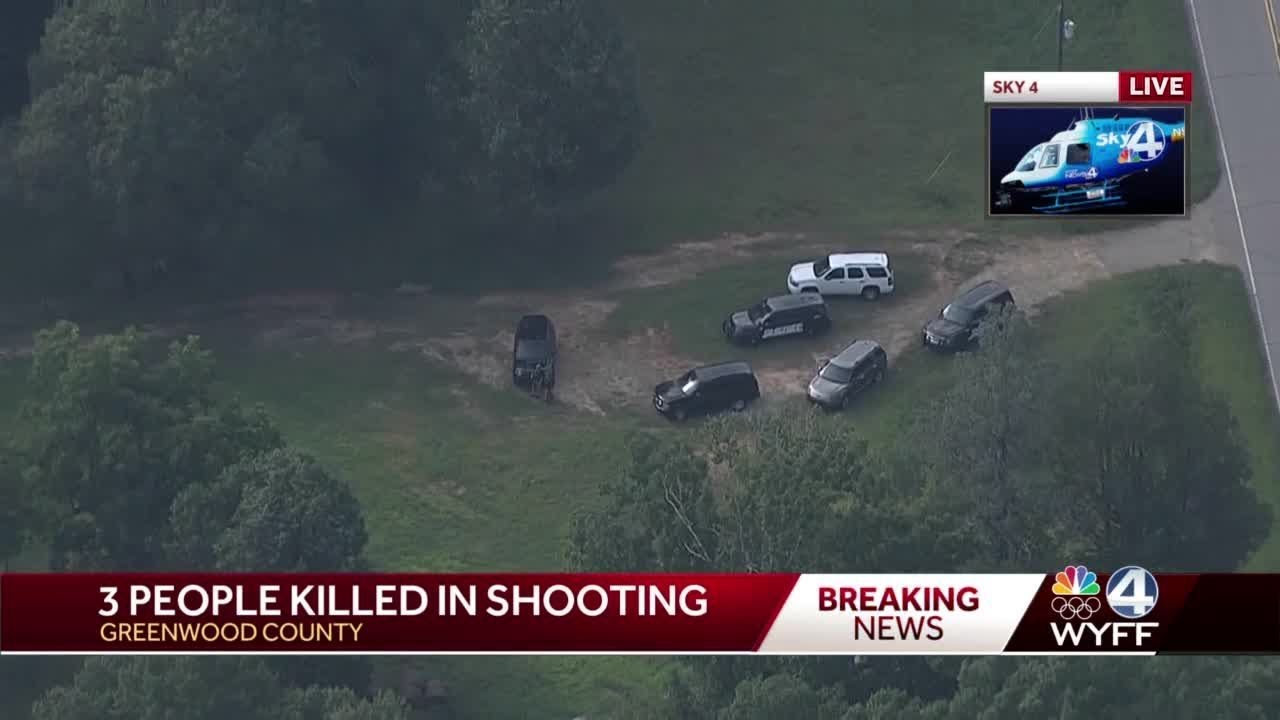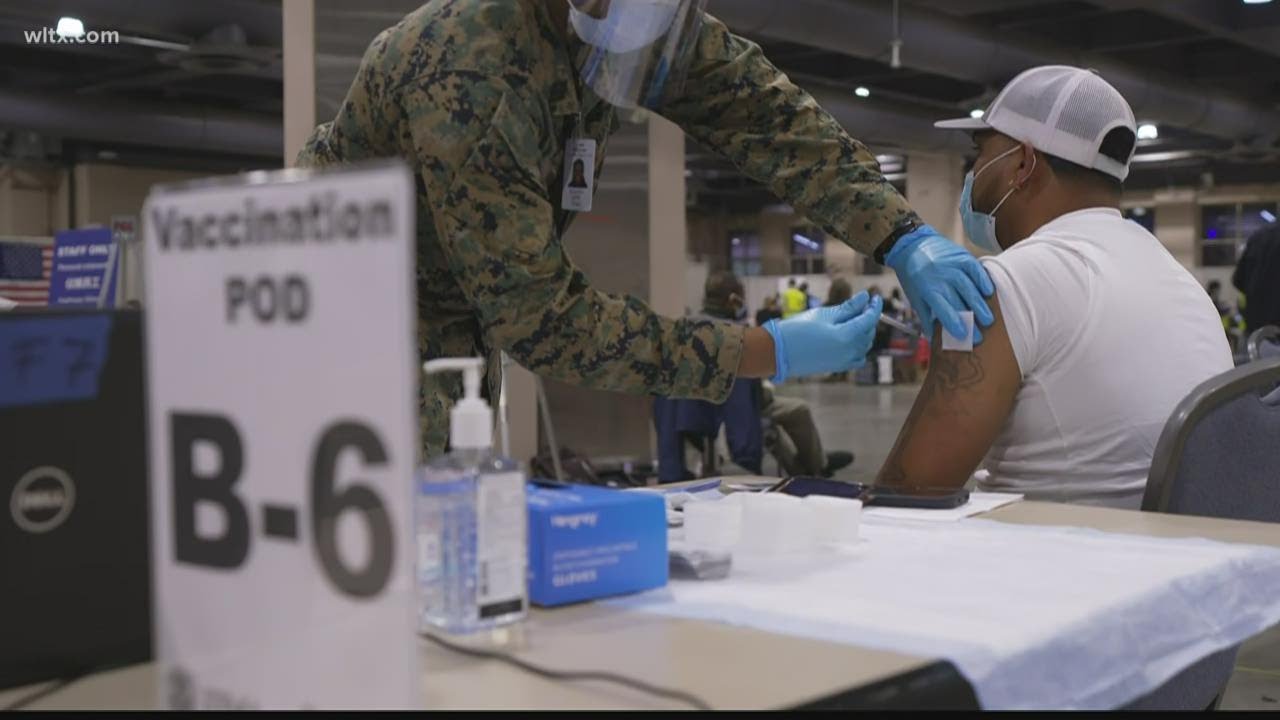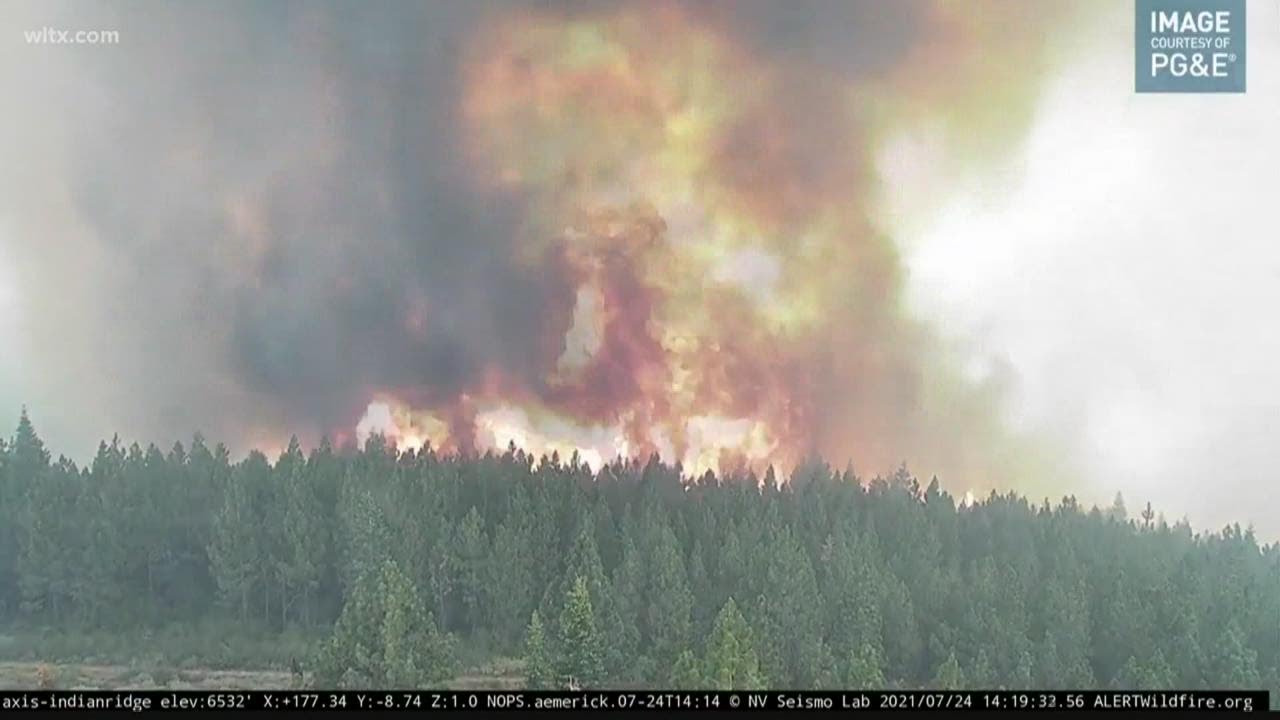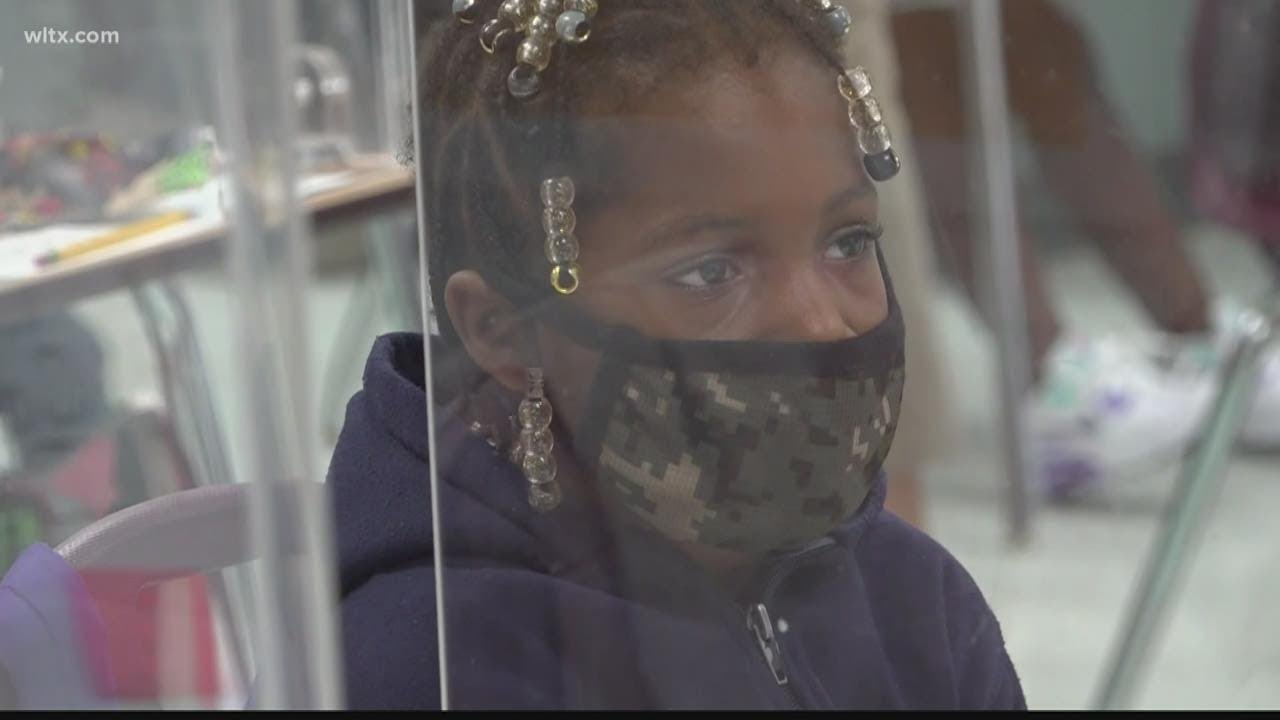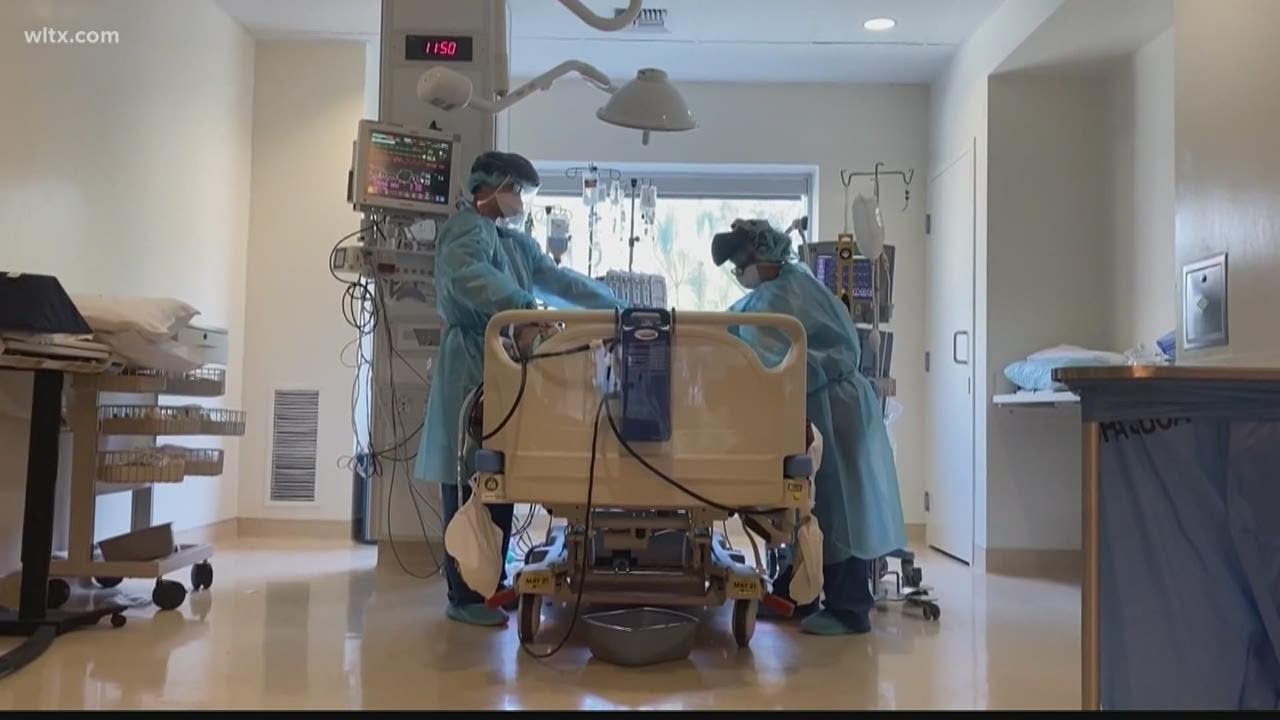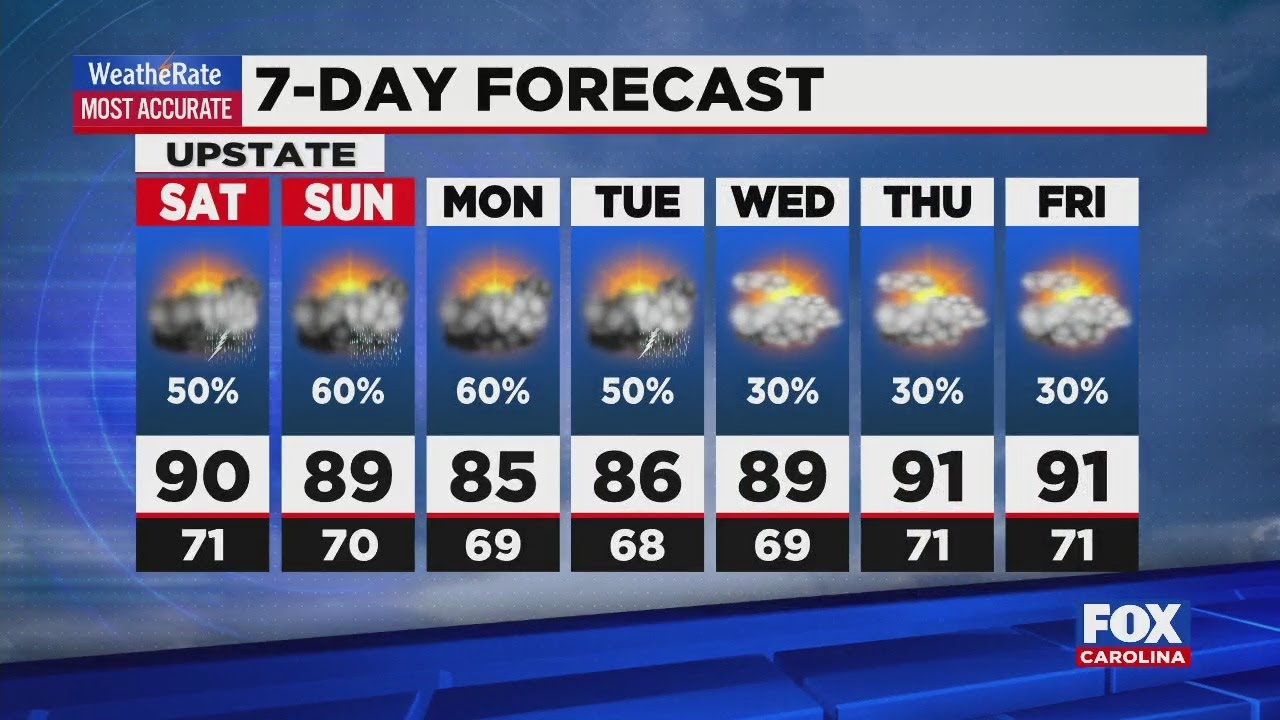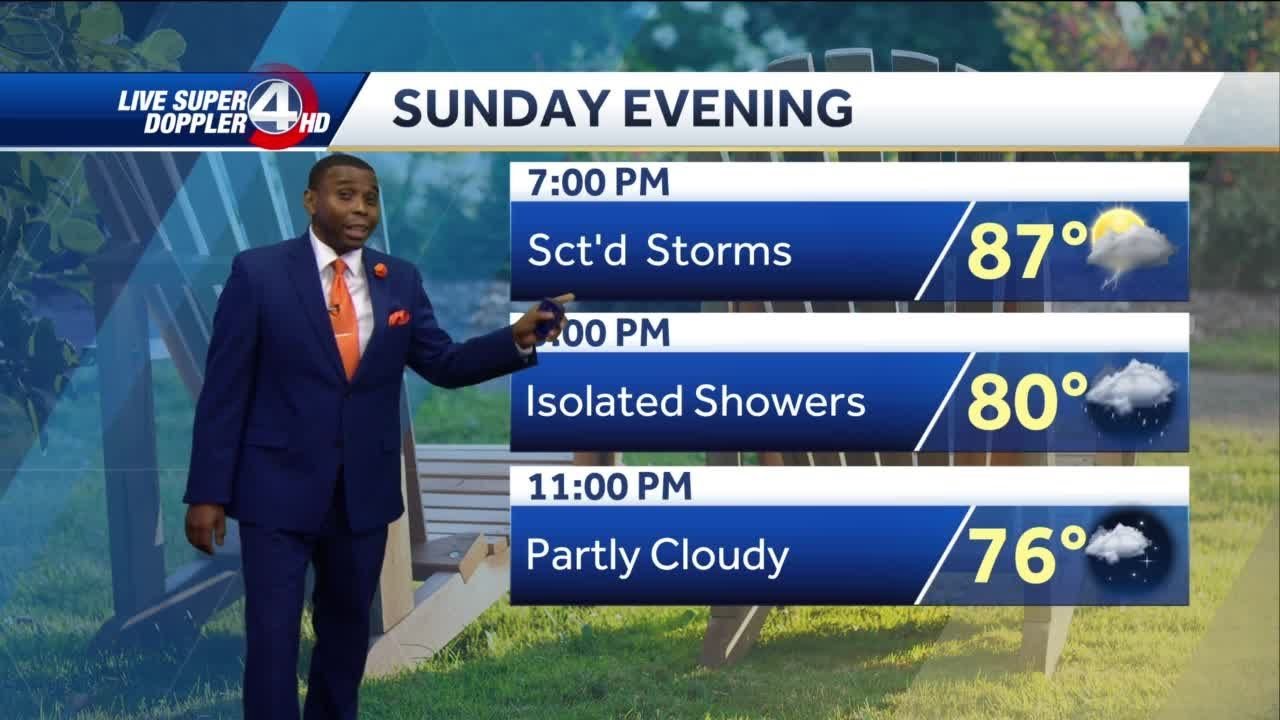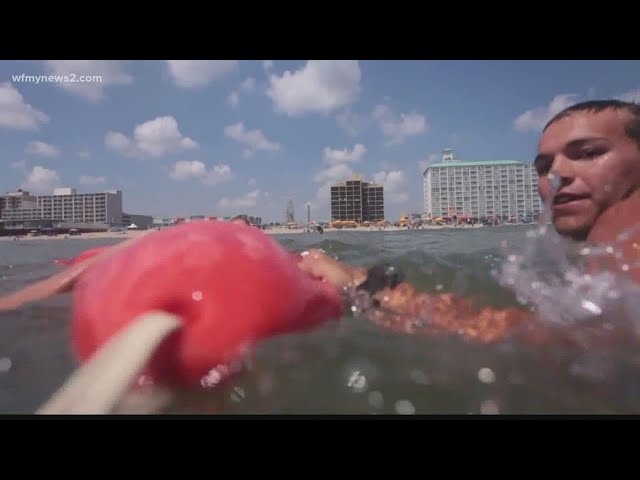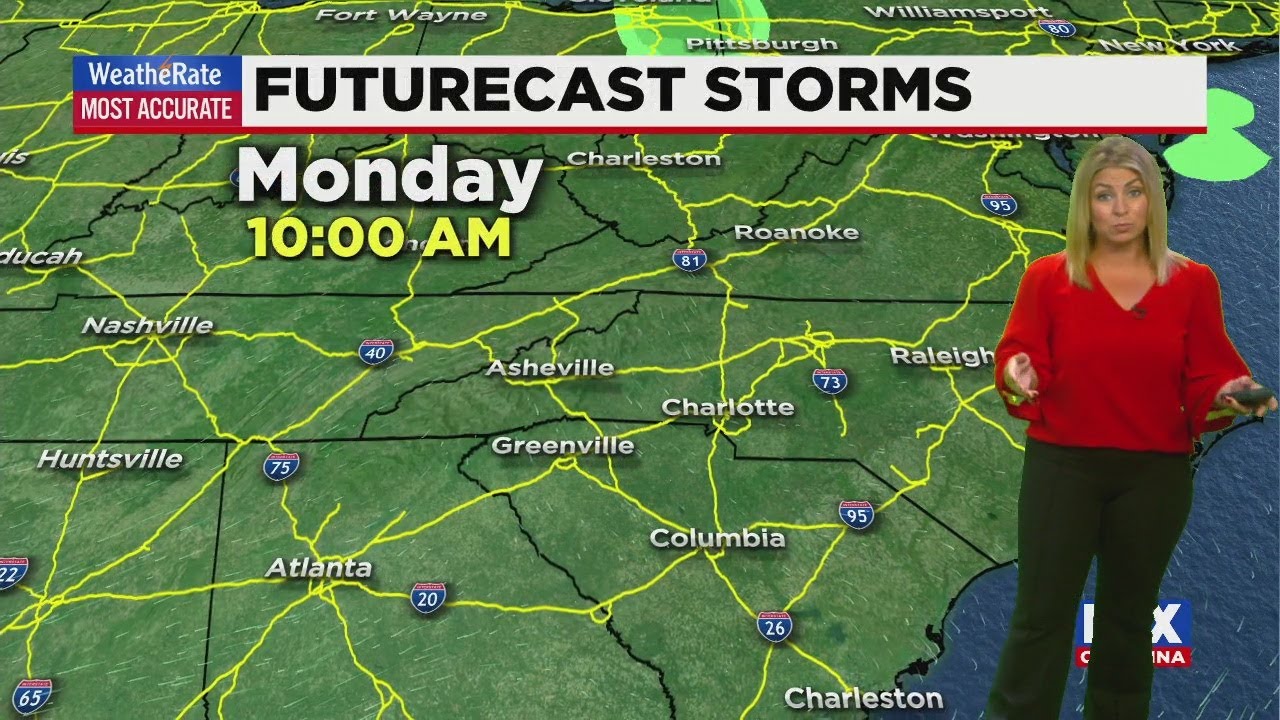
Throughout the month of April, much of the conversation around the Paycheck Protection Program, the government’s stimulus for small businesses, revolved around who received and didn’t receive the loans. But now that small businesses are getting through, can they even use this money?
This week on Eater’s Digest, restaurateurs Naomi Pomeroy in Portland, OR and David Tobias in New York City explain that the restrictions of the loans don’t really fit the needs of the industry and the guidance around their use and forgiveness are too vague.
Listen and subscribe to Eater’s Digest on Apple Podcasts. Read the full transcript of our coversation below:
Naomi Pomeroy, owner of Beast and Expatriate in Portland, OR:
Amanda Kludt:
For those who aren’t familiar, can you explain, tell us about your restaurant group, your collection of businesses?
Naomi Pomeroy:
Yeah. I have a small restaurant in Northeast Portland called Beast, and it’s a 26 seat fine dining restaurant with two big long tables and an open kitchen, and we do a six course tasting menu. Menu changes every two weeks, or did anyway. And then Expatriate is my cocktail bar that I own with my husband and it’s right across the street from Beast and it’s, like, 35 seats and has food and nice cocktails.
AK:
And are they in business to any degree at this point?
NP:
No. Our last day of service was March 15th and we’ve been closed since then. Everybody filed for unemployment on the 16th and we don’t know when we’re going to reopen and we haven’t done any kind of take-out or delivery or anything like that.
Daniel Geneen:
Would you mind just saying how many employees you have and what kind of loan you guys requested?
NP:
Oh yeah. So everybody that applies for the PPP has to do their calculations in the same way. So it’s two and a half times your average monthly payroll for your establishment. One is Beast, we had 15 employees and the other was Expatriate, that also had 15 employees, so total of 30 employees. I applied separately for the two establishments. At Beast, I think I got $170,000.00, and I think at Expatriate, we got like $80,000.00. Something like that. So now we have this money, but it-
AK:
Can you talk about the process of filing for the loan and how that went for you?
NP:
Yeah. Sure. I think it went the same as it did for anybody else that tried, and I’m sure a lot of your listeners, since there are probably some people in the industry, would be familiar with that, but if not, I’ll tell you that it made the Obamacare website crash of 2008 look like a cake walk. It was definitely difficult to navigate and it actually … I have a PPP now, which is really awesome, except that it’s also just as equally mysterious as the application process is the how to distribute the funds or how to get in compliance with the regulations around it. But yeah, there was a mad rush. I mean, I’m part of the Independent Restaurant Coalition, which we formed March 17th or 18th sort of in quick response on a national level to deal with corona.
Even with all of our members who are running … Sometimes Kevin Boehm, he’s a restaurateur for the Boka Group in Chicago, he’s been kind of a leading voice in how to deal with the PPP with the application process and then kind of with the guidance, and even he says that it’s just, the guidance changes a little bit every day, and even within his community in Chicago, some attorneys and tax accountants are saying different things, some bankers are having different interpretations. So everything from start to finish on the process has been a literal cluster-you-know-what.
DG:
Oh, we can say it.
NP:
Cluster-fuck! It’s been a total cluster-fuck! Yeah, so anyway, nobody really understands it, and even what’s so funny is that even though I got funded for my PPP at the beginning of this week, I was finally able to talk to my banker and I said, “Well, I just signed some loan documents that I don’t even feel like I really understand how to get forgiveness on.”
Because the forgiveness isn’t up to the government or the SBA, the forgiveness is going to be up to the individual banking institutions on what qualifies for forgiveness or how the SBA guidance is interpreted. So it’s best if you got the PPP to have a good relationship with your banker, which I do, and when I was in touch with my banker she said, “Well, we’re really unclear also as to how forgiveness is going to work, and we recommend that if you got the PPP, you try to hold on to it and not start spending it until hopefully a little more guidance comes out in the next week or so.” And it was just … Literally got no extra information from her. She said she was confused, so that does not really bode well for the whole situation.
AK:
So even the banks are saying you might be smart to wait to spend the money.
NP:
Yeah. I mean, the advice right now that has been circulating in the IRC and in my community anyway is that if you get funded and you need it to all be forgiven, which I think is the situation that most of us are in, is that we can’t … Going into an uncertain economic future and restaurants with extra loan obligations sounds like a recipe for disaster. So I think for almost everybody that received a PPP, their goal is to have it 100% forgiven, and because the guidance is still being fine tuned, let’s call it, from the SBA, the recommendation has been to hold onto it for as long as you can.
I can only hold on to it without … I mean, my eight week clock starts ticking in six days from now. So right now, I’m feet on the ground, doing lots of math calculations, figuring out how many of my employees want to come back. And I mean, I use the word … I’m doing air quotes right now because what I mean by work is I want to find out how many of my employees are willing to come off unemployment for me to pay them to stay at home.
AK:
Right.
NP:
Which is just so crazy to even say that out loud because it just sounds like such a stupid idea.
AK:
You have no work for those staffers.
NP:
No, and I guess my big generalized fear is that as we’re kind of getting into this moment, we’re starting to talk about opening up restaurants again slowly and with distancing guidelines and hopefully safely, I guess depending on what state you’re in. I’m not sure what Georgia’s doing there, but for those of us who are kind of considering that this could be coming in a few weeks or a month, my fear is that people that get the PPP are going to push into opening up very quickly, force their staffs back to work because they legitimately need to pay their rent and utilities. It’s putting owners in a very tough spot and it’s also putting employees in a very tough spot because in a lot of states, I think it’s actually a federal mandate that if you are offered a job back and you refuse it, you actually lose your unemployment benefits.
AK:
Yeah, and right now I’ve been reading that unemployment is oftentimes better than what they could be getting if they did go back to their jobs, and then if they go back to their job, the restaurant might end up closing ultimately and then they have to scramble to get back on unemployment. Have you been hearing the same?
NP:
Oh, absolutely. I mean, I think that is the crux of it. I mean, my math calculations right now, obviously I would like to make good with my landlord so I have a good relationship going forward, and as a business owner, look, I understand the plight of the landlord also. I don’t have a big company. My landlord owns the building, but she has a mortgage on the building also. So it’s like when I don’t pay my rent, I’m also putting her in a bad position with her bank. So I would like to be able to make good on that relationship, but I don’t want to do so at the expense of my staff, so I am literally looking at, can I hire back most of my staff and pay them more on unemployment and then help facilitate them getting back on unemployment in eight weeks, because I don’t think our restaurant will be open then.
So I think it’s definitely an interesting kind of … It’s just, it’s a quagmire that we’re in. It’s a real mess and I don’t see the way out.
DG:
In that case, you would be using your PPP to pay your utilities and pay the staff and end up with zero of it.
NP:
Well, yeah. The funny thing is, is that the PPP, I’m just going to go ahead and call it what it is, which is, it is literally a kind of … It’s a disguised hand-out to restaurant owners that helps the government get their unemployment numbers to look better than they are. I’m sorry to laugh, but I just think about it as, it literally is just us bailing out the unemployment system.
AK:
If you were able to start from scratch and write the bill yourself, how would you, I don’t know, divvy out the money? Would you just give a blank check?
NP:
Well, I mean, look, obviously that’s kind of, maybe that’s asking kind of a bit much. All of our work has to be very bipartisan at this point, especially, you know, Congress is in this period of just duking it out with each other as well, so I think in order to push anything through, it has to sound like something everyone could get behind. So when you talk about getting people off unemployment, you know everybody’s interested in getting people back to work. I don’t think there’s any question about that part of it. I think people want to open back up and they want to get back to work, so I don’t mind that we have to take this money that is only forgivable if we use it in a certain way, that makes sense, I mean, you don’t want people that say, “Oh, my restaurant’s not going to reopen again anyway, so I’m going to take this $150,000.00 and buy a house in Tahiti,” or whatever. Like, yeah, you don’t want that.
DG:
Right.
NP:
So I think what we’re talking about, what makes sense is, if the guidance could be switched to when a restaurant is able to open and has a business to return to, that’s when your clock starts ticking and then you need to use that money for your first few months back in business again.
AK:
Would it also be useful to open up the restrictions so you could use the money to make your restaurant, I don’t know, more amenable to the current climate?
NP:
I mean, it has to be used in the restaurant, that should be real, right? But if what we’re talking about is trying to get the economy back moving again, we’re going to have to open up our restaurants in a way that makes sense with whatever the current climate is going to be, and I think while we don’t know exactly what that current climate’s going to look like, there isn’t a single person out there that’s projecting that it’s going to be any better than 50% capacity. And even if you read a lot of the state guidelines for reopening, I mean, they’re all actually … Our state and Oregon is going, I’ve heard, to mandate social distancing, six feet between all parties that aren’t related to each other, no private parties larger than 10, and a 50% occupancy rate. So if you’re talking about that, at least in my restaurant, what I need to use the PPP money for is to pay a couple of my staff members to help me brainstorm and revitalize and rebrand my whole thing. I’m sorry, whoever didn’t make it to Beast, hopefully we’ll do something cool like that again, but that babe is not coming back. We can’t do it.
It’s two communal dining tables, there’s a foot and a half between each of the guests and you’re sitting with a bunch of people that you’ve never met before in your life, you don’t know where they’ve been. So the model of Beast is dead and I think I’m okay with that, but I actually need some money to restructure and rebrand and retrain. And even if you’re just talking about the money that has to get spent on making sure that we can safely have diners in our restaurants, like buying PPE for our staff. So far, my state’s not offering any free … We have to laminate our menus and we have to get all this disinfectant and you have to spray between each customer, and everything’s going to take longer, there’s going to be less people, and I think that really the big thing to think about here is that if we’re talking about operating at 50% capacity, we’re just talking about a whole lot of restaurants who can’t do what they did before and do that. Margins are just too tight.
NP:
So we basically need all that money to be able to use it however we need to create whatever brand new business we need to create to make it through. So we can go back to employing all the people because obviously restaurants do employ a ton of people in this country. I think it’s 11 million in independent restaurants, so it’s pretty important for us to try to figure this out, and it’s good for the economy, so that’s why it becomes this bipartisan issue that we can probably get some work done on because everybody knows that 11 million jobs is worth a lot.
AK:
Do you want to talk a little bit about your work with the IRC and what the next steps are there for you guys? I know you released a big letter this week.
NP:
Yeah. Thanks for asking. Yeah, so when the IRC was formed, the CARES Act was basically already on the floor being passed. We wrote a letter to Congress, the IRC did, and we actually are getting a lot of traction right now, which is so cool. The IRC, the Independent Restaurant Coalition, was formed literally on March 17th or whatever and now we have 51 thousand or more than that people participating, so that’s pretty quick.
AK:
Wow.
NP:
And we’re getting some traction on The Hill, which is really cool. We just decided, it’s like a quick phone call that was Tom Colicchio and me and Kwame and a bunch of different chefs of the James Beard Foundation, and it was like, “Oh my God, we have to do something.” And we realized, we can’t just put stuff on our social media and be like, “Hey guys, listen up. We’ve got to save restaurants.” We got funding from James Beard Foundation, American Express, and Chase, and we’re actually working with a lobbying group to push this legislation through and be heard, and it’s working. So we wrote this letter to Congress and we were asked for $120 billion stabilization fund for the restaurant industry that will be focused on smaller, independent restaurants and restaurants with less access to funding, which is just like you would imagine. Anybody that’s running a Mom and Pop place that can’t pay for a high powered attorney and tax accountant to get their PPP applications filled out. I mean, we just want to help people and this would be in the form of grants. And this is the fix that we kind of dreamed about but were too late on in the first round of funding, so this is essentially a carve out for independent restaurants, and people are listening, so I think that’s really, really cool.
And if people that are listening to the show want to be involved, they can go to SaveRestaurants.com, which is our website, and there’s lots of information. They made it so easy. You can go and click through and email your Congresspeople straight from the website and use your voice to add to the coalition because really, I think what’s important is people have to realize that what’s at stake is the entire industry. It’s expected that I think 30% of restaurants or more won’t make it through this. I read different statistics all the time, and I’m not a numbers person, so I’m not sure, but listen, it’s a total shit storm.
AK:
It’s big.
NP:
Yeah. And we don’t want to lose the diversity, right? Because I think about the kinds of restaurants that I like to eat out at, and they aren’t all places that you’ve heard of. I think about the places that I love and care about, and it’s just little noodle shops or taco trucks and whatever, like that. And it’s just like, we’ve got to figure out how to make sure that those people are getting the attention and funding that they need to make it through, and I don’t think that that funding should be limited to having to hire back 100% of your team when you’re going to be 50% as busy. Restaurant margins are already so tight that we can’t afford that, and we need to do everything that we can.
If independent restaurants employ 11 million people and create a trillion, I think … Not just independent restaurants, but all restaurants in the US I think contribute a trillion dollars to the US economy, then it’s obviously worth spending a little bit of money on. I know that $120 billion doesn’t sound like a little bit, but if you spend $120 billion and your return on that is a trillion, you’re doing pretty well.
AK:
Yeah, I think it works out, and I think we’re at a time when we need to be talking bigger and bigger numbers for these relief packages.
NP:
I hope people understand that the window of time that we have to address this problem is probably four to eight weeks in terms of really saving restaurants, so I hope that if people do care about it, they start to get pretty active now because the later part’s not going to work because restaurants are already saying they’re closing permanently.
DG:
Yeah.
AK:
So thank you for being generous with your time.
NP:
Any time.
AK:
Thank you for all your work on the IRC and good luck with your PPP loan.
NP:
Okay, thanks. Please remind everybody to visit the IRC website and repost our social media stuff and get involved. It’s not very hard and people … Congress really does need to hear about how much we like our individual restaurants.
David Tobias, owner of The Wooly in New York City
AK:
We wanted you on because you actually got a PPP loan. You own a number of venues in downtown Manhattan in the Woolworth Building. Can you tell us about all your places and how it’s been?
David Tobias:
Yeah. Sure. Yeah, so we started a while ago with a private event business, grew that a bit, then opened a café, bake shop called The Wooly Daily, then after that, opened a restaurant, about a 73 seat formally sat restaurant, a couple years ago. So yeah, it’s been totally crazy, as I’m sure you can imagine, but we’re just trying to figure out next steps right now.
AK:
When the shutdown originally happened, did you shut everything down, did you stay open for delivery and take-outs, did you have to lay off a bunch of your staff?
DT:
Yeah. We laid off a whole bunch of people. We laid off a lot of people, and we shifted all of our business towards delivery, take-out, which was not really a primary focus of our business before. We’re mostly, our bread and butter is private events, big happy hour gatherings, lunch. That alone was a big pivot for us. We did delivery, but that’s not really … It wasn’t really our focus. So it was a bit of a crash course for us. Thankfully for us, we did have a lot of the channels already set up, so we had our Seamlesses set up, we had our Caviar set up. We had begun the process with Uber Eats, and a lot of people, a lot of restaurants actually at that time didn’t have the tablets. They didn’t have a rep with a lot of these delivery services, so I know of a bunch that had to close temporarily while they figured out how to do that, while those companies, Seamless, Caviar, were incredibly understaffed doing their own lay offs, so you couldn’t get through to people, you couldn’t get tablets. A lot of these companies, while you can load the service up on your own tablet, they require you to start off with their own proprietary setup, so a lot of people didn’t have the channel set up.
So thankfully, despite us not doing a lot of delivery business at first, we already had that setup, so we were able to shift some focus and kind of keep ourselves busy with that while … And more than anything, it didn’t really generate a lot of revenue, but it at least helped us stay a bit optimistic and kept people busy and kind of dreaming about what the future could be like with delivery and take-out alone.
AK:
And what was the process like applying for and then getting the loan?
DT:
For us, it was fairly seamless. We obviously really care about our staff a lot, so that was our primary focus and we were incredibly aggressive getting everyone as quickly as possible on unemployment that should be on it because obviously right now it’s incredibly favorable. Very quickly after that, we shifted focus to applying for the PPP. Now I don’t want to speak for everyone here that efficiency and focus on that immediately got it for you, but we have a good relationship with our bank, whose our lender, and we have a lot of stuff kind of organized on the back end. So we were just really thorough and really fast and basically applied as soon as humanly possible.
AK:
So one of the issues with the loan is that it’s kind of a … The clock is ticking. You only have so much time to spend the money, so how are you guys thinking about how you’re spending the money?
DT:
To be honest, we are scared to spend the money. There’s too much unknown I think for anyone to feel incredibly confident spending the money. I think people fall into a few different camps at this point. There are the people who are incredibly optimistic and are just choosing to have faith, “This is a wild time, let’s just take a risk and go ahead.” Because obviously, the golden ticket here is a grant, is having this convert to a grant, so a lot of those details are not known yet. So some people are choosing just to have faith. This is a wild circumstance, everyone will be on small business and business owners’ sides right now and all those details will work in business owners’ favor. So there are those people.
There are people in the middle who are cautiously optimistic, and then there’s other people who got the money and are just sitting on it and are very realistically thinking about giving it back. Kind of keeping it there as an insurance policy, but hoping they don’t need to spend it, and if they do, at the time that they do, there’ll be more details. We’re kind of in that camp right now.
AK:
If it does go back into a loan and not a grant, from the restaurateur’s point of view, is this a good loan?
DT:
It’s a loan that restaurants can’t get typically. The restaurant industry, I’m sure you know, it’s notoriously difficult to get loans from financial institutions that look like this. Absolutely. However, it’s not really a typical loan also because the government does have rules with how you can even spend the loan money. So you can’t just spend the money on building dividers. You’re going to have the most incredible divider system.
AK:
Okay. So this can’t be a roundabout way of you getting a 1% loan?
DT:
Everyone’s fear is that, and that’s why there’s a lot of hesitation with using it right now.
DG:
How do you feel about telling other people that you’ve received the loan? It’s such a fucked situation that you should feel embarrassed or you’ve seen all these larger restaurant groups get attacked for applying and then receiving the money, but how do you feel, especially interfacing with smaller restaurants or people that have applied and not gotten it?
DT:
I have not felt … I have felt like its been motivating to more people that I’ve been speaking to, that they should … That it’s possible that … Because a lot of people don’t know anyone who got it.
DG:
Interesting.
DT:
So the fact that it’s possible I think is motivating-
DG:
Or someone who got, like, 10% of it.
DT:
Exactly. I think that is a motivating factor for most of the people I speak to, where they’re like, “Oh, whoa.” They kind of perk up a little bit and they’re like, “Oh, interesting. Okay. I’m listening. Okay, maybe I should be a little bit more optimistic about this second phase of PPP that they’re talking about.” The fact that it’s a reality for a small business, a really small business like ours, I think can be motivating for sure, but I think there are bigger issues with the program that I think no matter what, it’s like, we’re kind of a bit of an outlier case and there are other issues with the PPP that still can distract and worry people for sure.
DG:
Right.
DT:
But similar to the unemployment situation that people had, it was a nightmare applying for it, the system was down, in New York at least, the website wasn’t working, people weren’t even sure if unemployment was going to happen, if they were going to get any type of subsidies, and the fact that you started to hear little stories trickle in about people actually getting it, it gave you a bit of hope that it would actually happen.
DG:
Yeah.
AK:
So I know despite all this, you are relatively optimistic about the future. So what do you see for this business, especially for someone who makes a lot of money on events? And that is one sector of hospitality that I think is very much in trouble. What do you see as a future?
DT:
I am optimistic because I have no choice right now, so really, no one has a choice. You either give up, close up shop, have other things in your life that you’ve had kind of gestating and bubbling that you put your energy into, or you try to work with what you’ve got, and that’s what we’re doing right now, no matter how vague it is. There are things that are already unprecedented, like the fact that we are getting a loan like this, that’s unprecedented and it’s unique, so these are the kinds of things that give me hope that there will be more good unprecedented things that happen. In terms of the pivot, while I think the restaurant game is going to change in terms of its physical destination, I think people’s desires for connection and for experiences through food, which is really what our business is based on, I don’t think that’s going to change.
So I think the question is, how can you deliver that to people? There’s just so much virtualization that will satisfy people. There’s just so much receiving ingredients to your kitchen and you creating the experience that people want, so our challenge right now is, how do we create a curated experience for people out of our physical location? And we have a lot of exciting possibilities right now that we’re working on. A lot of it is development. A lot of it has not been putting rubber to the road just yet, but I think the idea is, figure out as many possibilities that you can right now with your current resources, and then as soon as little opportunities happen, you can just flip a switch and you’re good to go.
So we’re going to assume that there’s going to be a need for office catering, controlled environments catering, creating experiences there from a corporate perspective and from people’s own …. Their own personal perspective at home and for events. That’s something that people will want. I mean, even like Passover dinner, people were looking for solutions, full solutions for a Passover dinner.
AK:
So in your point of view, if a restaurateur is saying, “Okay, I’m just going to put my concept on moth balls right now and then reopen when I get the go-ahead and everything’s going to be fine.” That’s a little naïve.
DT:
I don’t know what their unique financial perspective is and situation is. They might have the luxury of being able to do that and risk it and they can just wait and see what happens, and I am sure a lot … Restaurant owners are pretty diligent in a lot of respects. I think that they know what the situation is going to be like if they can’t open. I, personally, I think that everyone should take this time to really look for innovative pivots that kind of keep the spirit of the restaurant space, events, food and beverage, all this stuff, I think people should look for things that kind of can carry that into a new era.
AK:
I mean, you have a strong lunch business and coffee shop, but a lot of your world surrounds bars and drinking and people being together. What do you see as the future of night life in cities like New York, Los Angeles and elsewhere?
DT:
I think it’s all going to be virtualized and put in Animal Crossing. I think that’s the future of hanging out with each other.
AK:
So sad.
DT:
I don’t know. I really don’t know. It’s something that we keep trying to brainstorm around, and every time we do it, it doesn’t end well. I think I heard you say in a previous podcast, AK:, the idea of … I think it was you. The idea that one of the reasons you go to a bar alone or a restaurant alone is to run into random people and the spontaneity of that and the randomness of that, it’s so special. I don’t know if you guys have found yourselves-
DG:
Sorry, I hate to pause you here, but-
DT:
Oh, that’s right. I remember. You poo-pooed the idea. Okay.
AK:
No, I think what I was saying is when you go out to dine alone, you want the energy.
DT:
Right. You want that energy.
AK:
But Daniel is the one who’s trying to meet people in bars.
DG:
No, no. I’m not taking personally, I’m not taking credit for that. I’m just saying, AK: has never left her house being like, “Man, I hope I rub shoulders with randoms.”
DT:
Fair enough.
AK:
Not usually my goal, but I like the energy.
DT:
We keep trying to figure out, how are we going to create this randomness, this carefree moment where people are connecting that didn’t know each other that get to know each other in new ways and you have that feeling to kind of explore parts of your persona that you don’t typically do during the day or in your day to day life? It’s a challenge. That’s one of the ones that we are kind of putting into a phase four category. We try to think of it as virtualization. We think of different ideas. Is there a virtual bar? A lot of people are doing these virtual bar things, but when you could push … When you could hang up and you’re at home and you’re in your pajamas and you go to sleep, it just changes the urgency. It’s not throwing you out there and forcing you to deal with a situation, which is kind of part of the allure of going out at night, is sometimes you’re just forcing yourself to go out, and you have the best night of your life.
Is it going to be a speakeasy that you have to go through a full battery of tests right before you go into it? Which is certainly possible. I know that they’re doing things like that, similar, in other countries right now. Is it going to be all private clubs that can ask potentially prying questions about your personal life that you couldn’t do in a public space? Who knows? We’re at the point where every time we have this conversation, it goes so theoretical that it’s fun, but it’s not a great use of our time.
AK:
It makes me so sad.
DT:
For us, it’s a bit of a waiting game for sure and we’re looking for opportunities … The one thing that we do have is we do have people working for us that can devote creative energy to thinking about this in a real way, which is exciting for us. So that’s one of the things that I’m … And we have resources to use. It’s easy to come up with concepts in your bedroom, but when you could actually execute and try certain things because you have a commercial kitchen and you have a bunch of back stock of delivery items and … You have different opportunities to give things a try, so that’s one thing that we’re fortunate with.
DG:
I think it’s super interesting. I think one of the reasons I find it challenging to speculate is I think you often have to dovetail your speculations into two different unique camps of, like, the future will be insanely severe and things will actually return sooner than we expect to a degree of normalcy, right? So it’s like, are we thinking about what happens long term when we have to actually figure out how to have cocktail bars over Zoom or are we thinking about it if we need to reduce our capacity at the bar by 50%? And I think those are just such different worlds. It makes speculation confusing.
DT:
Yeah.
DG:
I find. But I also think, one thing I’m … I don’t know if I want to say I’m optimistic about, but I think people are more forgiving to swings and misses. If you decided that you guys were going to do some kind of virtual mixology experience where you delivered everyone 10 ingredients and you had them all gather and there was some kind of hunt where they have to figure out how to make the drink and they were all communicating over Zoom and it just fucking sucked, I feel like in normal times, it would be some big article about, “Wow, this big restaurant group had this night of drinking and it was a huge flop.”
I feel like there’s an opportunity for people to have giant whiffs right now, which I actually-
DT:
Totally.
DG:
I actually think, the Zoom hangouts I feel like have kind of faded out a little bit, right? Those live deejay experiences and things that people were doing the first couple weeks, being like, “Yeah, I’m going to this club and this club.” You’re not. I don’t think those things have really clicked. But you keep seeing iterations and I just like … I appreciate the no man’s land of it and I appreciate that there is no standard.
DT:
I am totally on the same page as you. Bringing us to the restaurant space, the restaurant business before this, as you guys know, incredibly fragile. Everything can fuck you over. I mean, you have a water main break, your business is screwed for the month.
DG:
Right.
DT:
You have a couple really bad reviews where people are oddly passionate to bring your restaurant down because one of your staff was, I don’t know, had a bad day or something like that.
DG:
Right.
DT:
They could destroy your business. A train is down for a month, your bottom line for the year is totally screwed up. If you go into a new fancy establishment and a piece of meat wasn’t cooked perfect, a review is scathing and horrible and it just resonates and it’s online forever. This is a time-
DG:
And the domino effects of it. Yeah.
DT:
Exactly. This is a time where finally I think we’re a bit free of that and people are trying … People should be trying things, like you said, with this … The assumption is everyone is going to fail. The assumption is nothing is going to work. So you have the opportunity to try things out. Like you said, I think it’s a really interesting time. I mean, a great example of it, really funny, is The Maple, which everyone … Maple happened a few years ago. People were so critical of it. They set a really high bar for themselves, but people were so critical of it. People were optimistic, then critical and critiquing little things. “Oh, I saw this,”-
DG:
It was, of course, the flashy, delivery only service that Dave Chang had a stake in.
DT:
Exactly, and now people are like, “This,” and talk about it fondly, and critiques of it back then were like, “I saw the same dinner on there two nights in a row.” What the hell? And now it’s talked about with such incredible fondness, obviously. I mean, it was a really cool idea and really cool service.
DG:
Yeah.
DT:
But there is, this is a time to give things a try because you have people on your side, especially if you’re an independent business. I’m not necessarily sure if the big businesses … The larger companies are going to get that type of response, but this is the time to give things a try, throw things to the wall. Throw things on the wall, for sure.
DG:
All right. Just to wrap up, weirdest virtual night club idea you guys have had.
DT:
Probably Animal Crossing night club.


